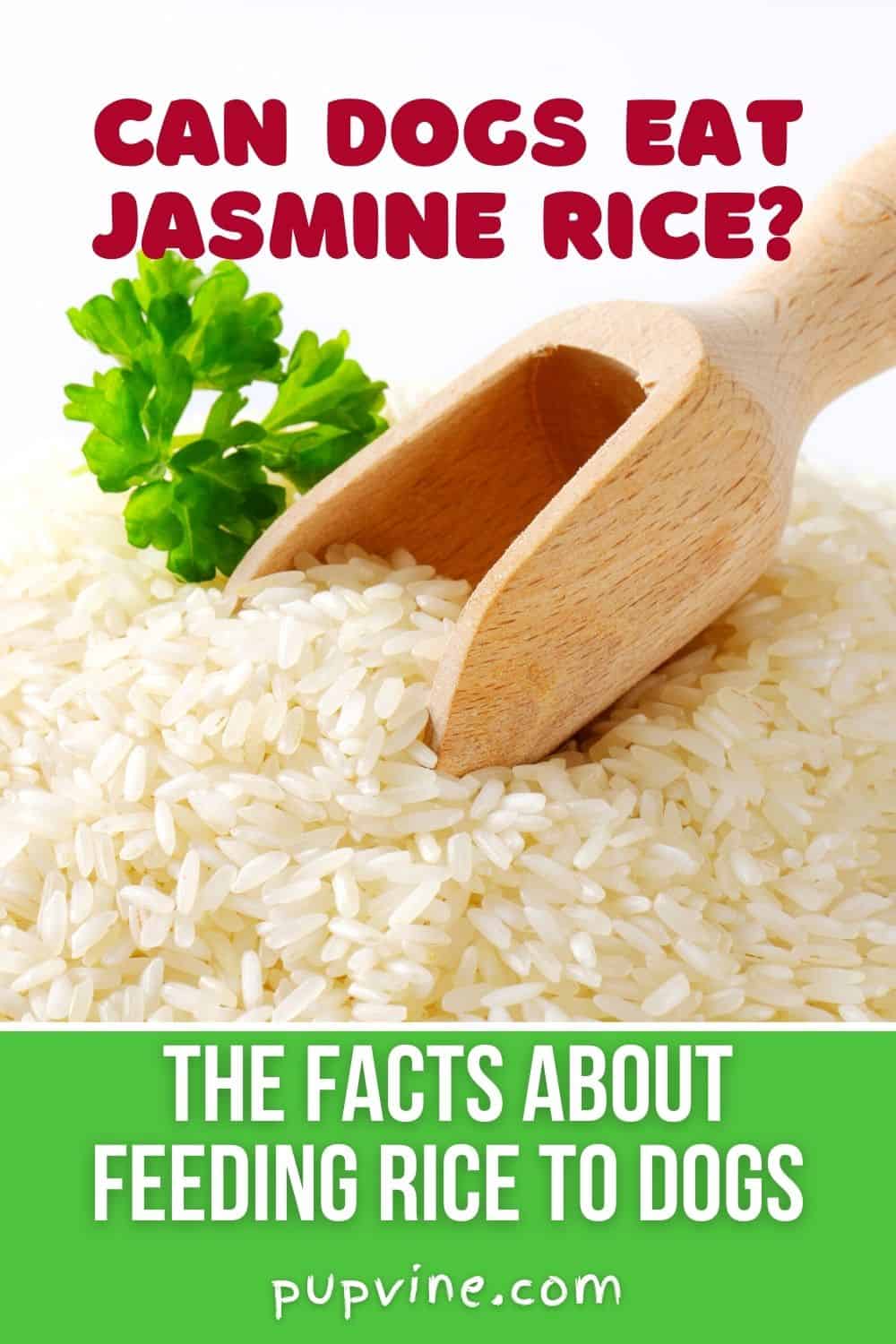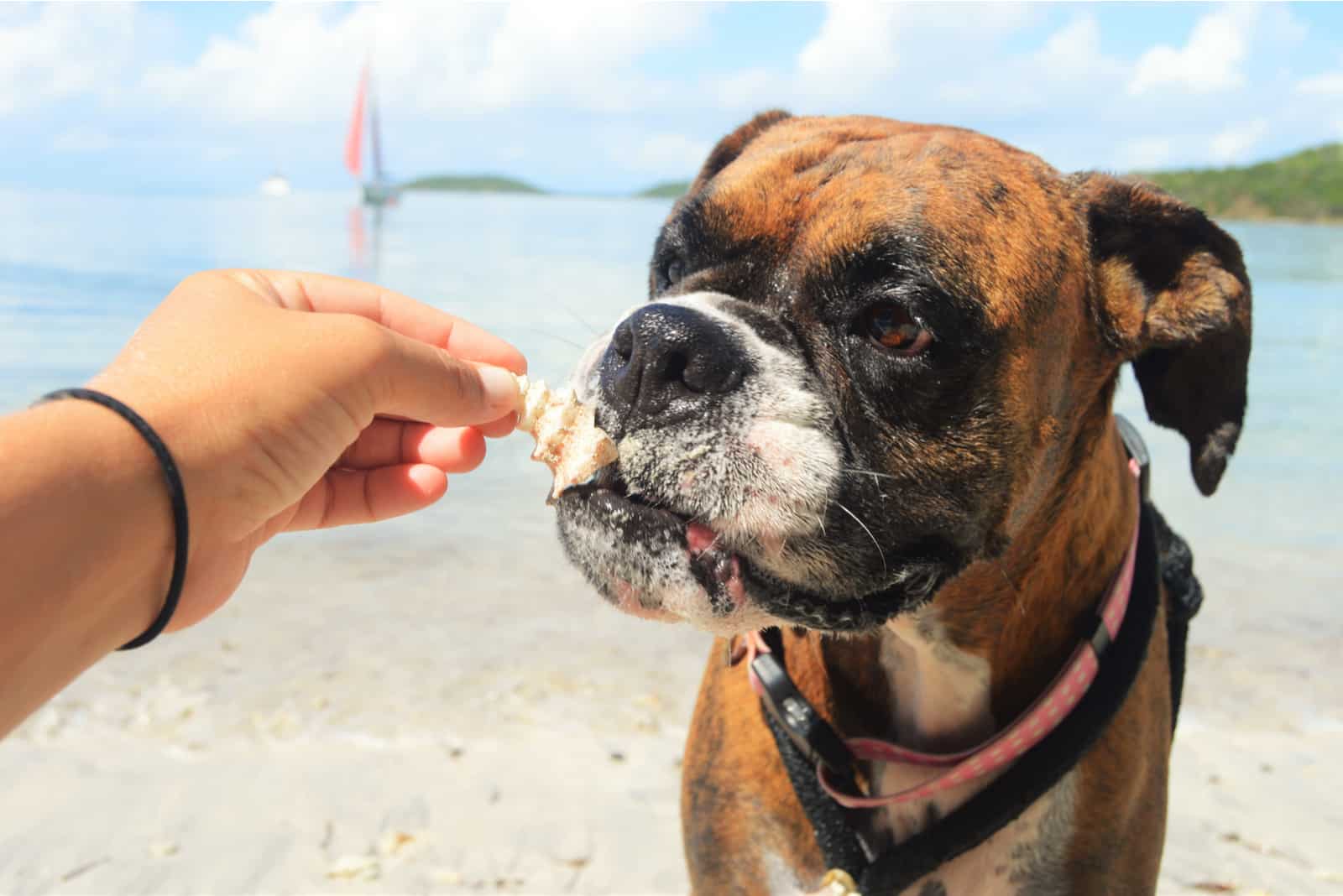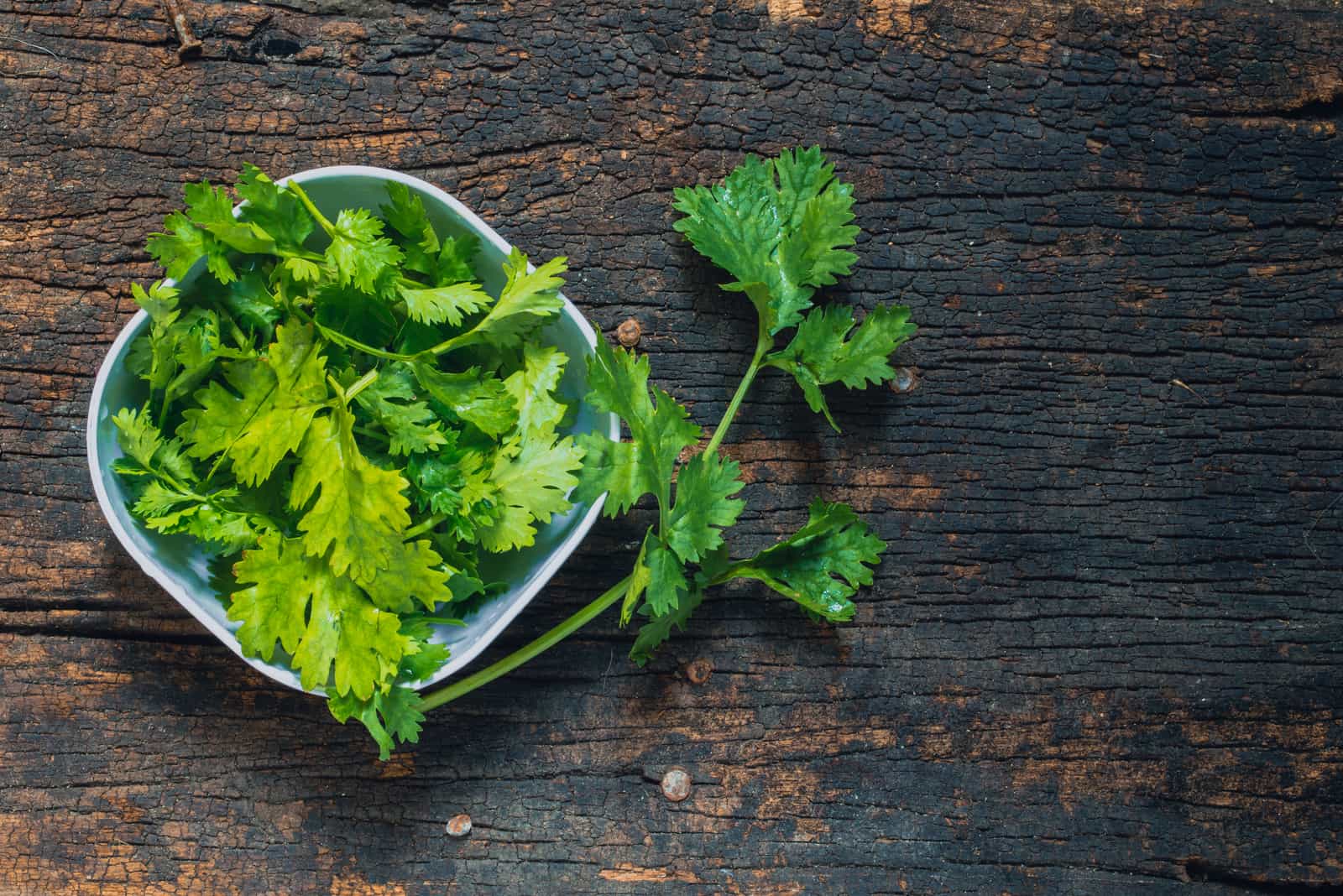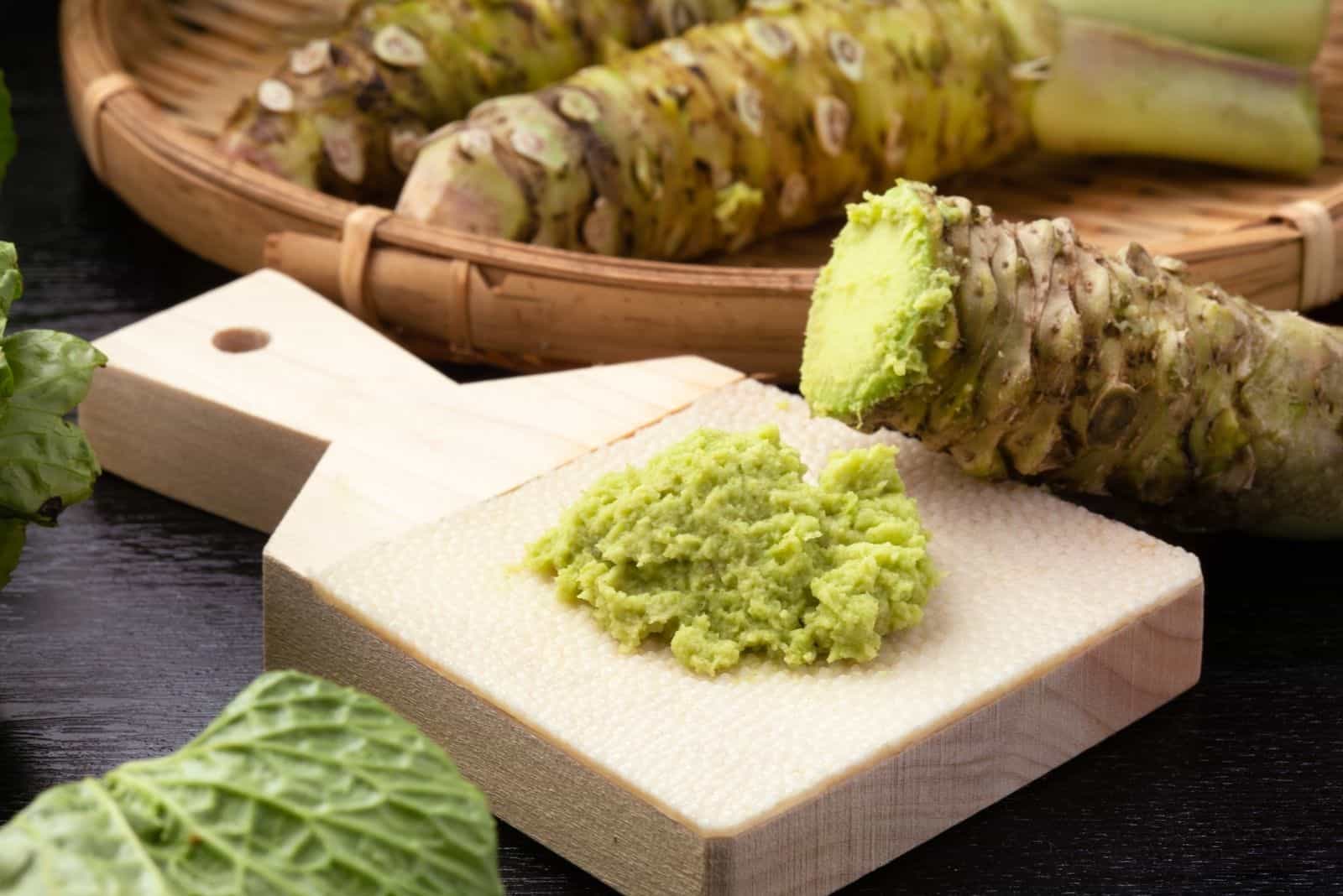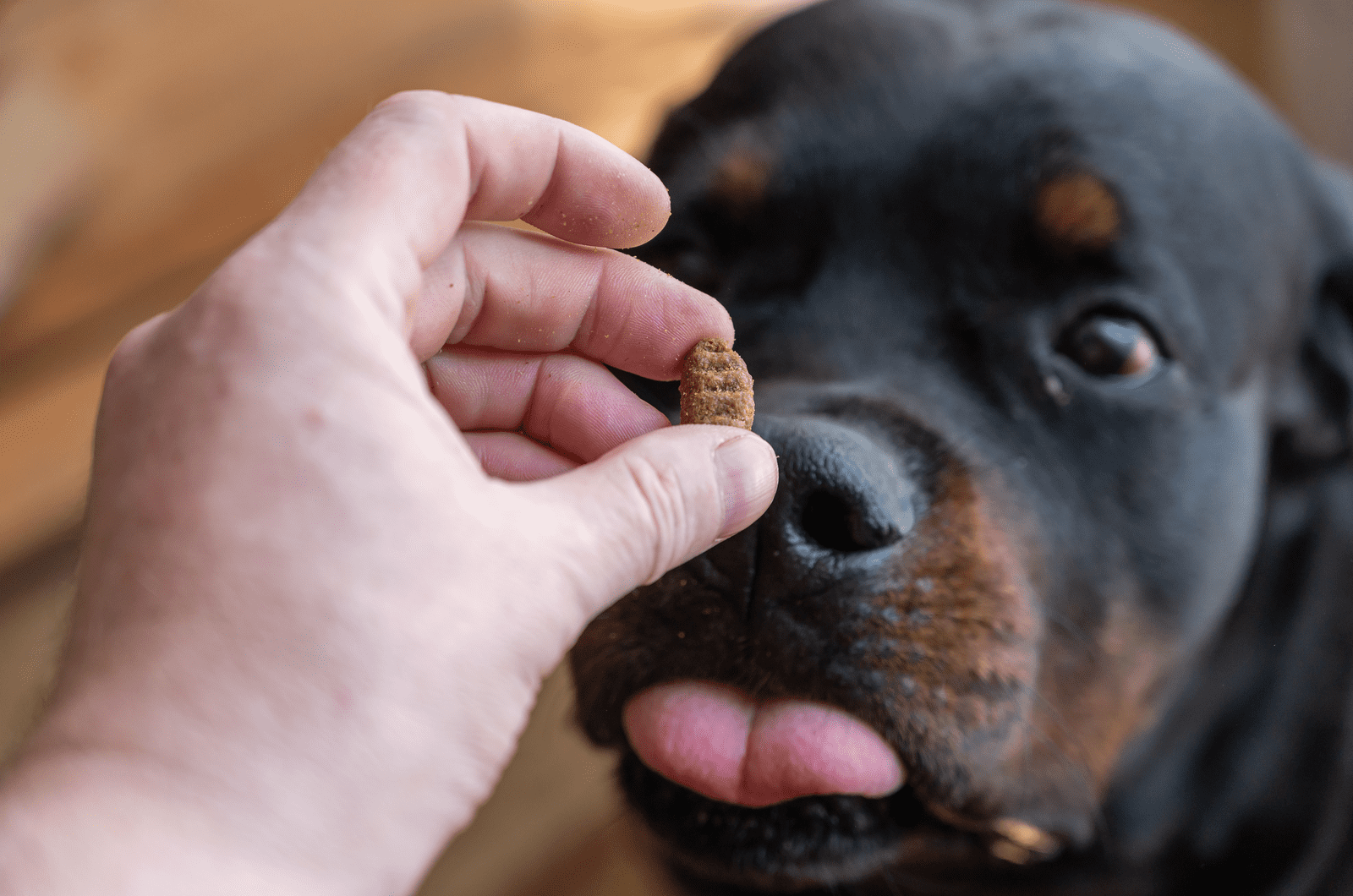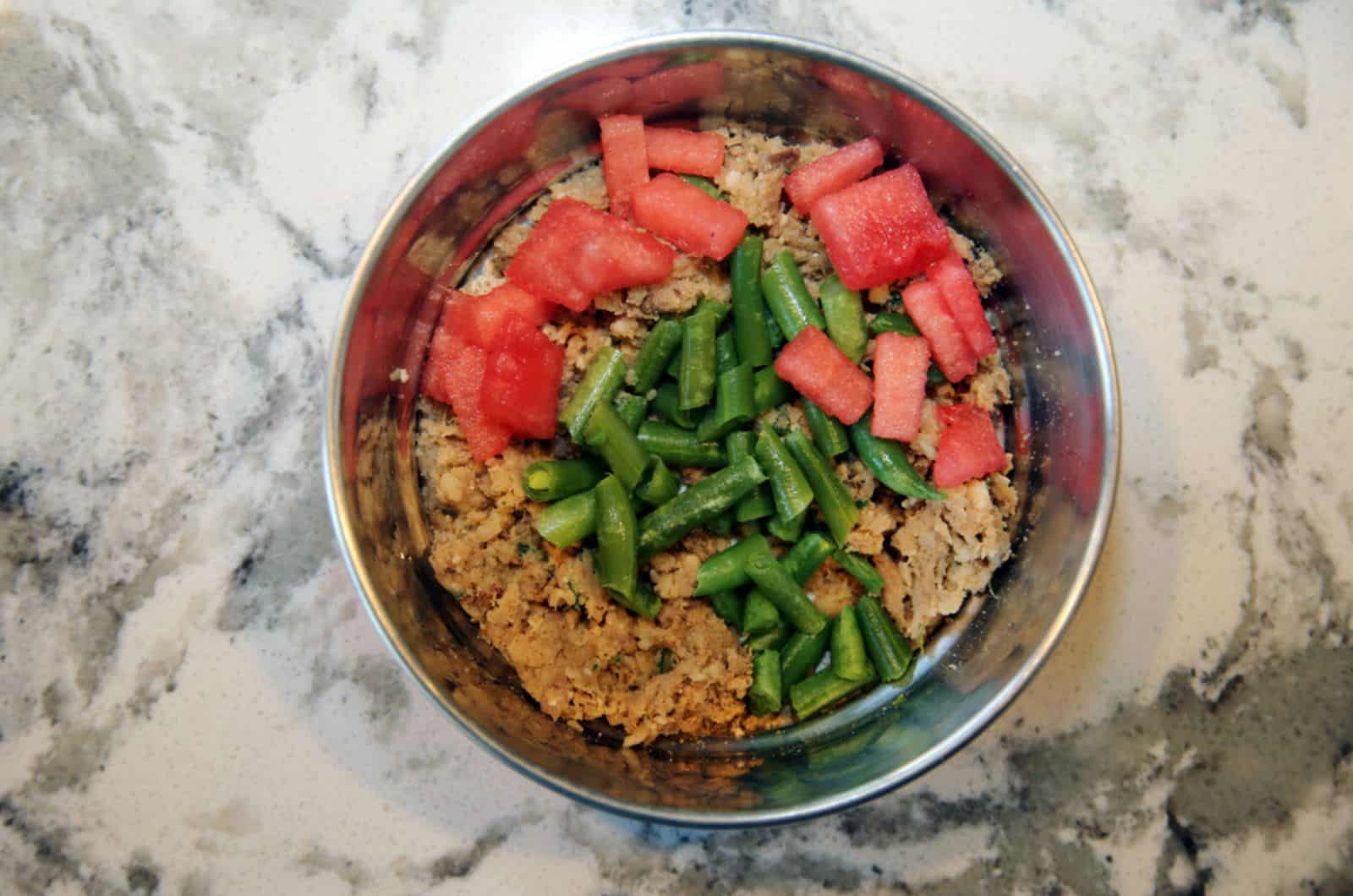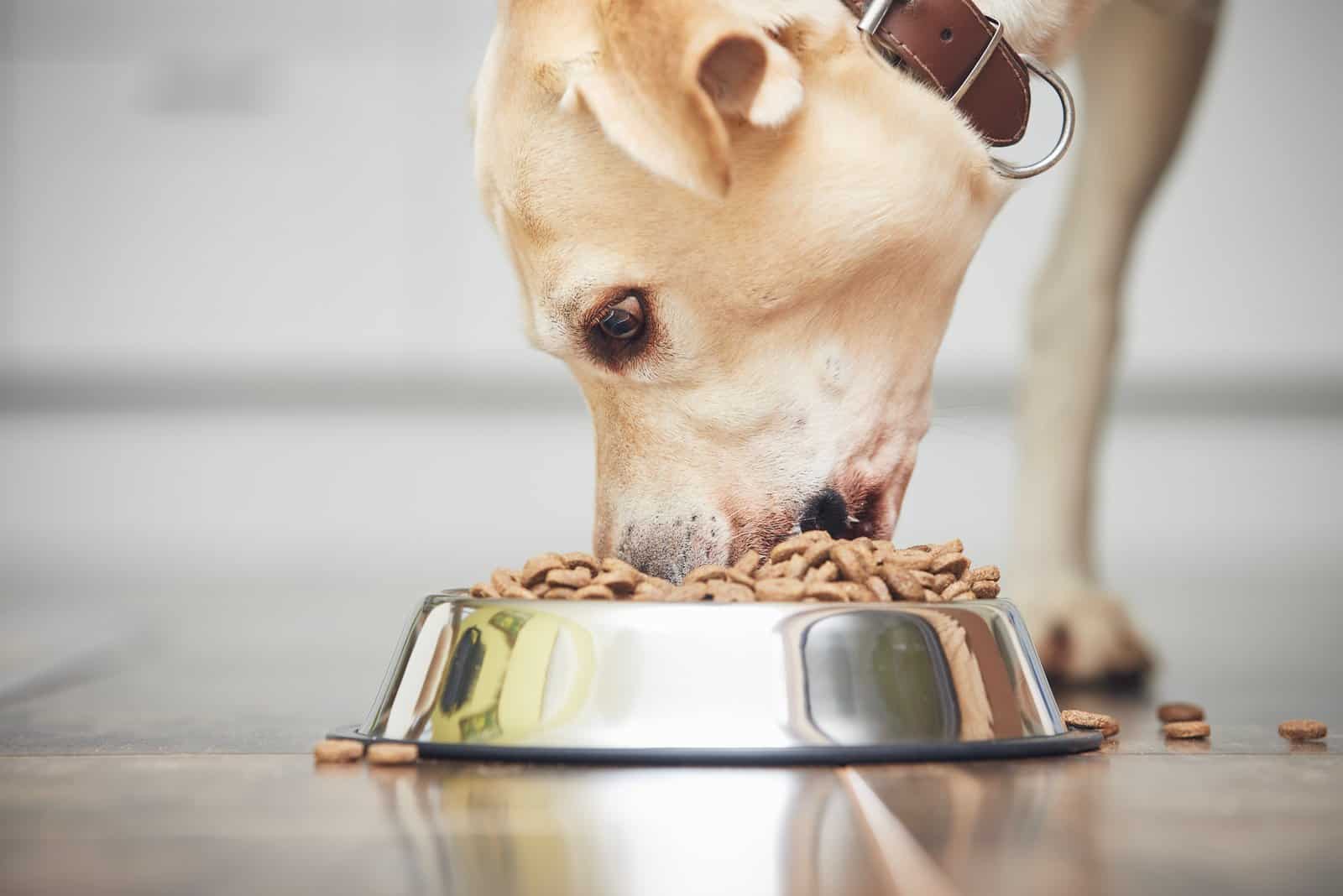Can Dogs Eat Jasmine Rice? The Facts About Feeding Rice To Dogs
The issue of feeding ‘human food’ to dogs is nothing new, but the argument has developed over time as attitudes towards different foods have changed, along with the perception of what we ourselves should and shouldn’t be eating, and this extends to the world of dog care.
We know that certain foods are not healthy, and many of us adjust our diets accordingly, although we are often guilty of indulging in ‘treats’ and comfort food to make things more interesting.
What about our canine companions, though? Is it safe to give them the same meals that we eat? We know that some ‘treats’ are bad for them, just as they are for us.
But, what about foods we regard as being healthier? Is it safe to feed a dog jasmine rice, for example?
Facts About Rice
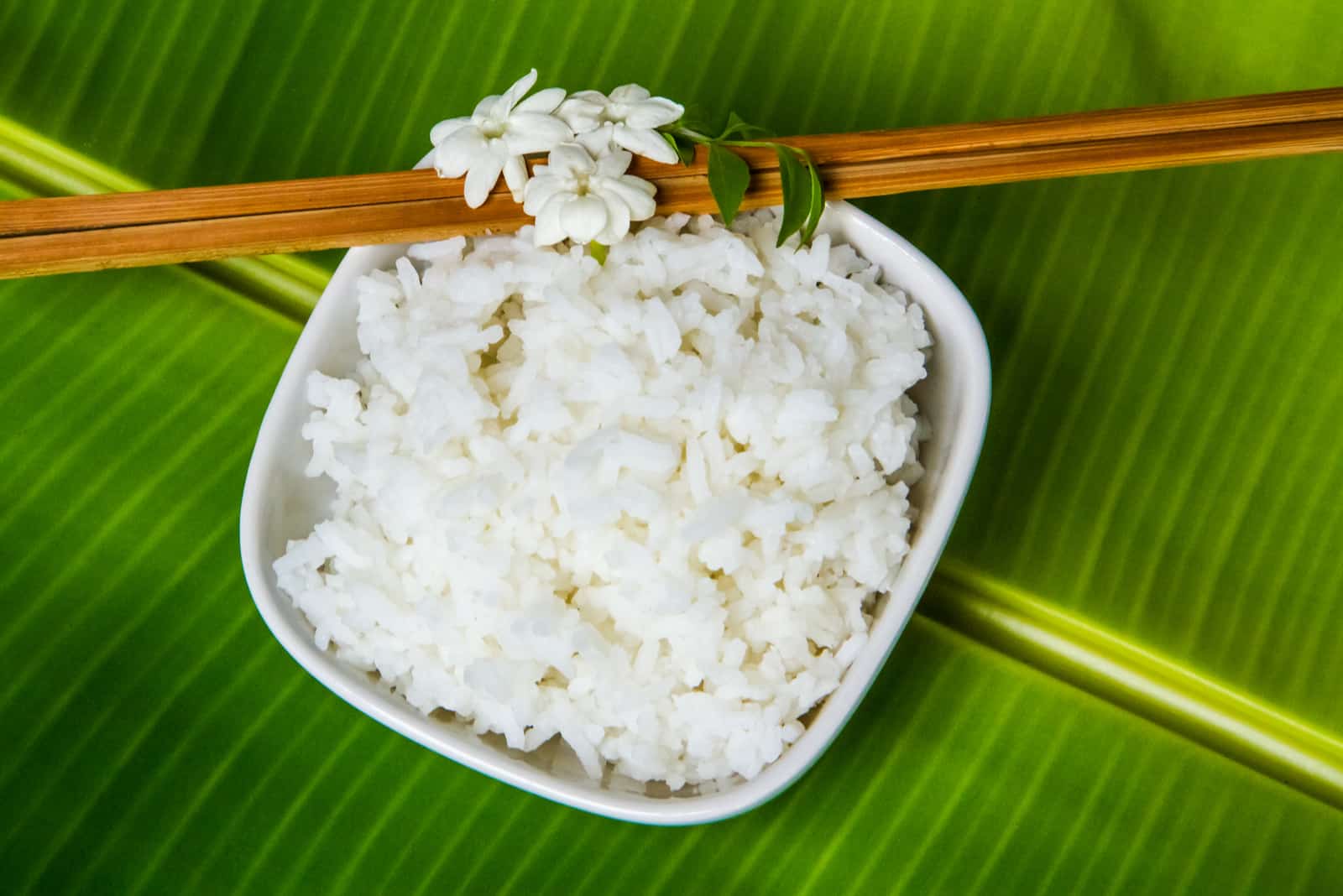
This humble cereal grain is one of the earliest known human foods (cultivated for at least 5,000 years) and is one of the most widely consumed staple foods in the world.
Grown on every continent except Antarctica, it is popular worldwide, but mostly found in Asian countries, where around 90% of rice is produced and consumed.
Although there are more than 40,000 varieties, they are basically split into two colors (brown or white) and three types, which are short grain, medium grain, and long grain.
As part of a healthy diet, the benefits of rice seem obvious at first glance:
• Energy — a bowl of brown or white rice can boost energy levels as rice is mostly carbohydrates (80%). Our bodies transform these ‘good’ carbs into energy.
• Vitamin B1 — also called thiamine, this vitamin helps with the above process of converting food to energy.
• Vitamin B3 — known as niacin, this also helps with the energy process, with the focus on skin health, the digestive system, and the nervous system.
• Riboflavin — this has many roles in the body, including helping wounds to heal faster.
• Magnesium — essential for overall health, this mineral helps with making DNA, protein, and bones, as well as regulating nerve and muscle function.
• Heart disease — some research has linked the consumption of rice with a lower risk of heart problems as it inhibits the production of a hormone called angiotensin ll. This hormone contributes to the narrowing of the blood vessels and excess sodium to accumulate in the blood.
• Immune system — ‘enriched’ white rice has nutrients added by the processor, such as high folate levels, that improve the ability of cells to divide, including those in the immune system.
• Skin — vitamin B and antioxidants in rice all help to keep skin soft.
• Metabolism — whole grain rice encourages the body to burn almost double the calories than processed food does.
• Manganese — helps in the production of antioxidant enzymes that fight cancer-causing free-radical particles.
• Bowel movement — the higher fiber content in brown rice can ease constipation, keeping movements regular.
• Cancer — whole-grain (brown) rice has been linked to a lower risk of bowel cancer.
• Blood pressure — brown rice slows the build-up of plaque in the arteries (atherosclerosis) and stops the arterial passageways from becoming narrow (stenosis).

Photo from: @french_pug_morris
These are just a few of the health benefits that rice has to offer. However, much depends on the type of rice used and the cooking method employed.
All rice starts out brown, with the bran and germ still intact, which is where most of the vitamins, minerals, proteins, dietary fiber, and lipids are stored.
White rice is simply brown rice that has been processed, polished, and has had the outer husk removed, along with the bran and germ.
This makes brown rice an obvious choice for humans when it comes to a healthy diet!
In support of this is the recommendation that we always wash white rice before cooking, which reduces the amount of starch and gets rid of any dirt or debris.
However, this also strips away further nutrients, making it even less healthy.
Further to this, the cooking process can kill off many of the nutrients, so be careful how you prepare it!
One of the suggested ways of cooking rice without losing the goodness is to par-boil it (that is, bring it to the boil in a pan for a few minutes), then rinse it before cooking on low heat until the water is absorbed.
Note: this method is believed to help reduce the presence of arsenic, which can find its way into rice fields in regions with poor-quality water supplies where arsenic-based pesticides have been used in the past.
Some producers, especially in the U.S., add nutrients after processing the rice to put back some of the goodness, but this still doesn’t make it as healthy as brown rice.
Now that we know more about rice, we’ll learn about whether it is safe to include it in a dog’s diet.
Does Rice Have The Same Benefits For Dogs?
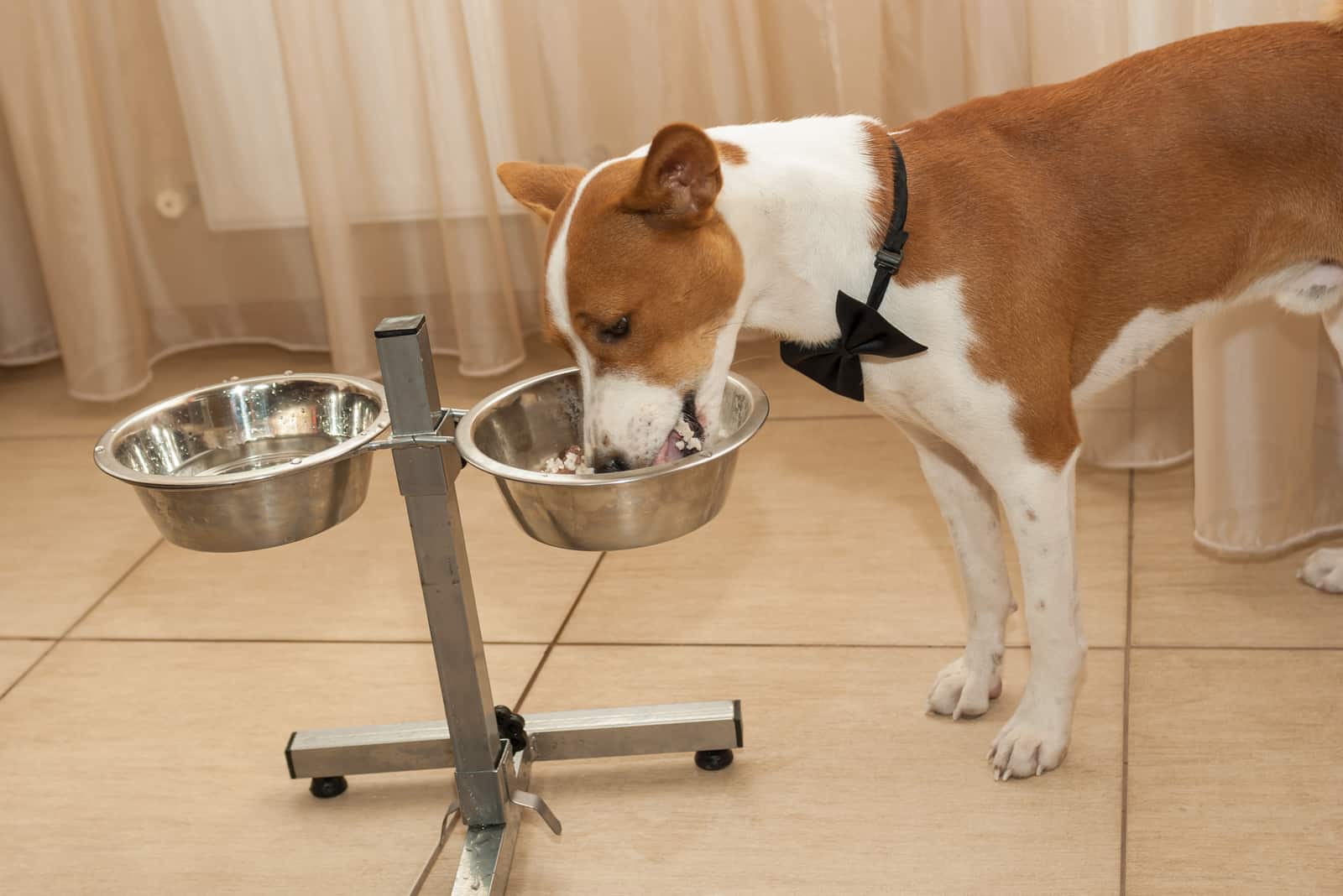
Dog owners worldwide often wonder whether they should feed their pets ‘human’ foods.
Many are concerned that their canine friends might be bored with their usual food and they look into ways of making it more interesting.
Although the internet is filled with pages that say ‘Yes! Go ahead…’, many of these, even those written by experts, offer flawed and dangerous opinions as facts.
Warnings, if any, are left until the very end, but how many people will not read past the first sentence, which has confirmed that it is okay to feed their dog a particular type of food?
Some of these sites use the fact that dogs are omnivores in support of their claims. The simple truth is that although dogs can eat a wide variety of things, it doesn’t mean they should.
Many people are shocked to find out that a large selection of ‘people foods’ can make their furry companions very ill. For instance, foods such as spam, prunes, blue cheese, Doritos, and wasabi should never be given to our furry friends.
It can be confusing and annoying as you trawl through websites that contradict each other.
What you need is a balanced view, providing all the information to help you come to a conclusion, which is what we hope to achieve here.
With regards to rice, you’ll find sites telling you that it’s perfectly safe to feed it to your dog. And, in small amounts at certain times, this is correct. It is even included in many commercial dog foods, so it must be okay, right?
Well, this all depends on a range of factors.
Oddly enough, white rice is sometimes chosen over brown rice to give to dogs, usually in cases of gastrointestinal problems (upset tummy) as it is easy to digest and doesn’t contain a lot of fiber.
Known as a bland diet, this is soft and highly digestible, and it is high in carbs and low in protein and fiber.
This softens the stool and reduces the need for defecation, allowing the dog’s stomach and intestines a chance to get over the illness.
A dog that is recovering from an upset stomach or diarrhea should never be given brown rice.
In fact, the whole-grain variety is harder for dogs to digest, whereas white rice is an easily digestible source of protein.
Then, we come to the cooking of the rice, which can be baked, boiled, steamed, or fried.
These are all well and good for humans, but the best way to cook rice for dogs is to boil it. We know that fried foods aren’t good for us, but they’re even worse for dogs, so avoid feeding your dog fried rice.
On the whole, it seems that for dogs, white rice has the edge over brown. It should be boiled and served plain, ideally without salt or spices.
What About Jasmine Rice?
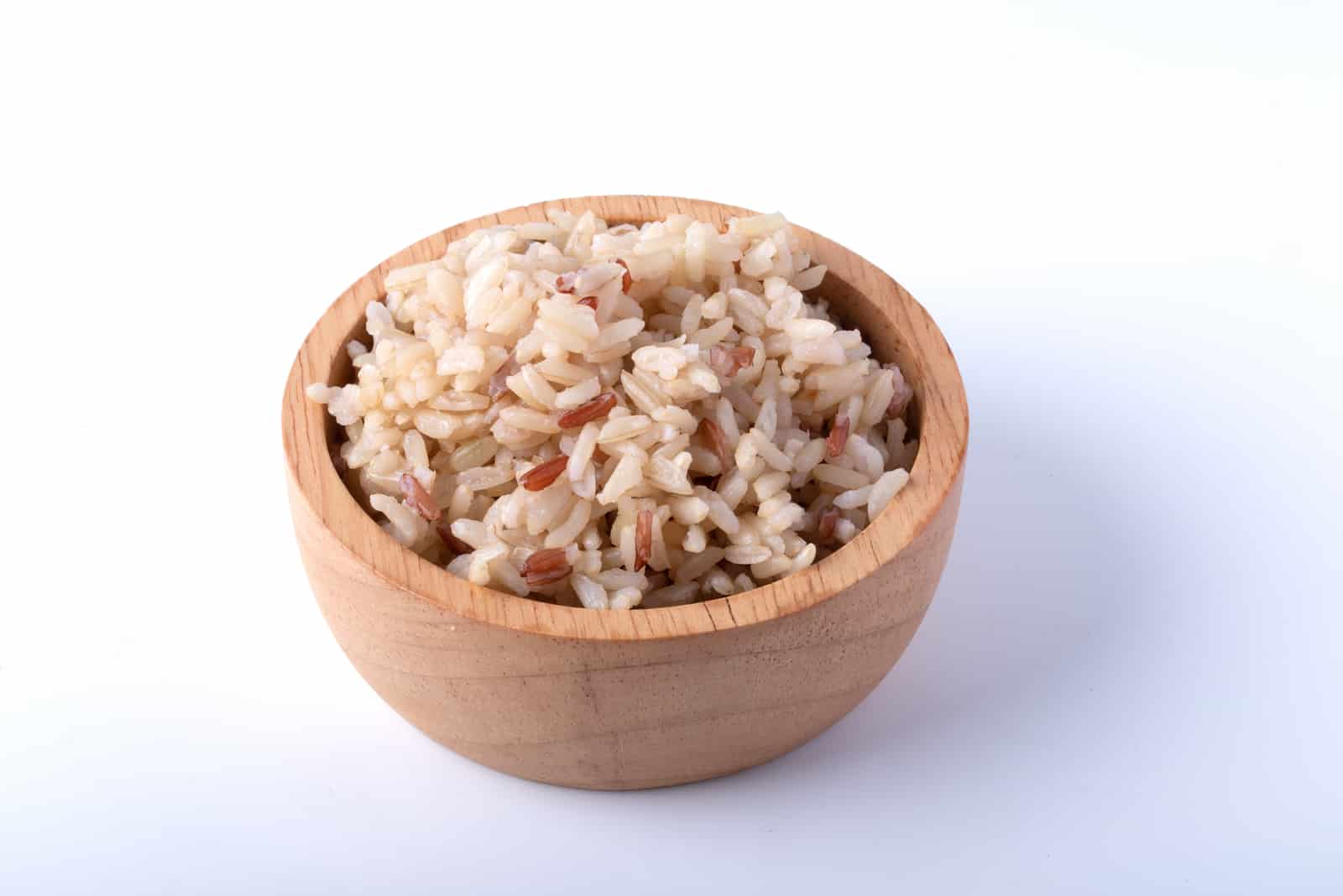
Once again, things can get confusing here. To keep it simple, let’s establish a fact; jasmine rice is a specific variety of
Thai rice, not normal white (or brown) rice, with jasmine added. The jasmine plant has nothing to do with the rice, except for the fact that the rice resembles the color of the plant!
Although jasmine rice is sometimes called ‘fragrant rice’, it smells of pandan leaves and popcorn! In many ways, it is similar to basmati rice, though not as fragrant.
This will hopefully answer any questions or concerns you might have about jasmine, as some sources claim the plant is toxic to dogs.
Jasmine rice is available in brown or white varieties, with the same nutritional values applying to normal rice.
Fragrant rice varieties, such as jasmine and basmati rice, have higher levels of amino acids, which makes them superior to others.
Are There Any Dangers To Watch Out For?
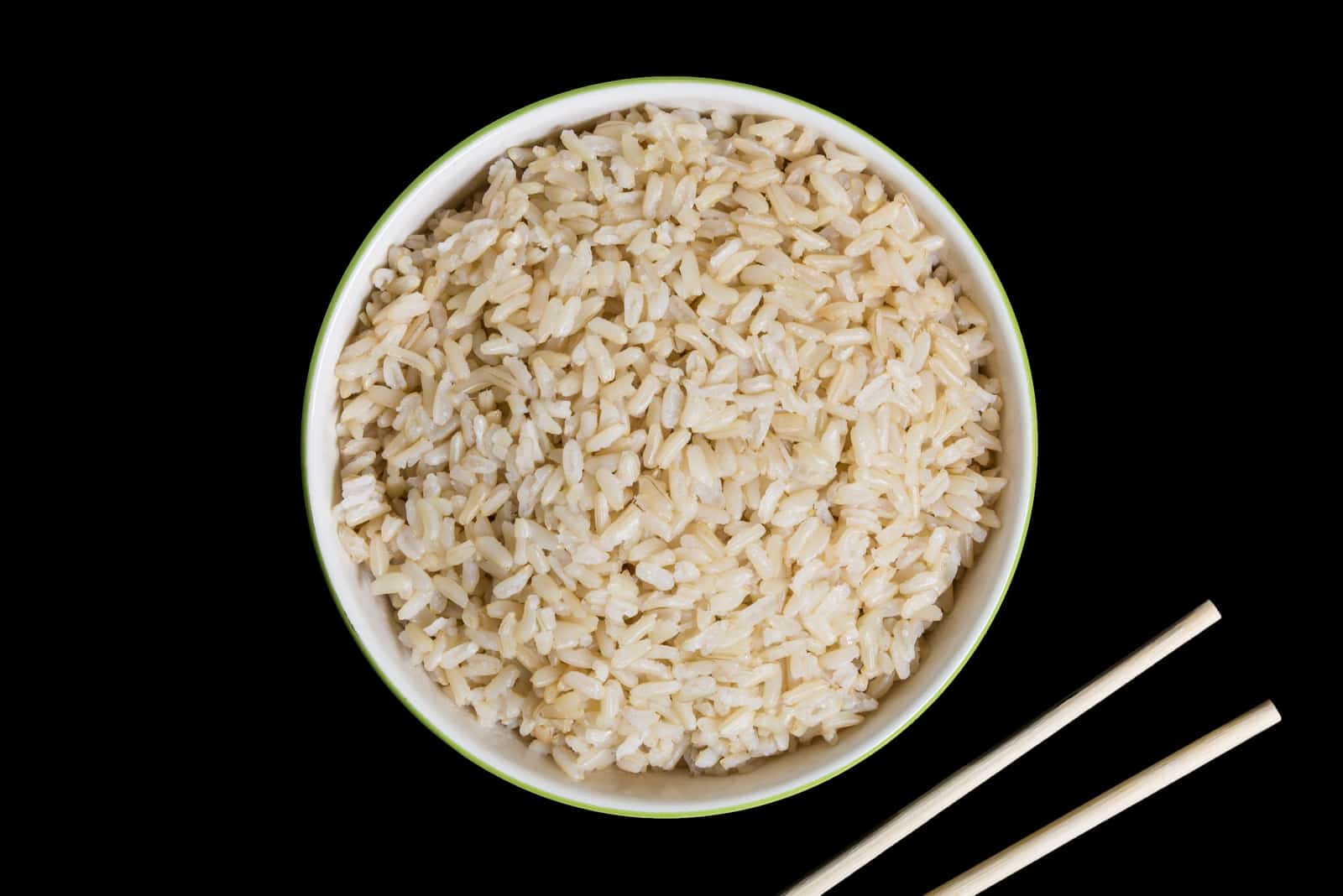
The quick answer is, yes, for humans and dogs! As we have learned, processed rice has far less nutritional value, meaning that humans would be advised to eat the whole grain, brown variety.
For dogs, however, even though white rice isn’t as nutritious, it is easier for them to digest.
However, one of the biggest problems is that rice (white, in particular) has a high glycemic index (GI), which means that it can make blood-sugar levels spike.
This makes it unsafe for dogs (and humans!) who are diabetic. Whole grain basmati rice is the best option as it is lower on the GI than other varieties.
Then, there’s the fact that it is very high in carbohydrates. Too many of these in a dog’s diet will cause weight gain, leading to obesity and heart problems.
Studies have also shown that white rice is linked to low levels of ‘good’ cholesterol, which increases the risk of heart disease.
In Summary…
All this information can be daunting. To make it simpler for you, here’s a quick overview of the facts in the answer to the question, ‘can dogs eat jasmine rice?’
Rice can form part of a regular diet for dogs, but it must be in moderation and never replace their usual food.
When you do introduce rice for the first time, it needs to be done gradually (as with any new food) partly to get them used to it, but also, to allow you to watch for any adverse effects.
It is extremely rare, but some dogs are allergic to rice or, at least, have rice intolerance. This will display itself in symptoms such as hair loss, ear infections, or dry, itchy skin.
Remember to boil any rice that you feed your dog, and don’t add salt to the water as this stays in the cooked rice. Aside from the possibility of sodium poisoning, too much salt is simply not good for them.
Never be tempted to add other spices as your dog may react badly to them. They lack the sensitivity to taste some of the more complex flavors anyway, but some spices (such as nutmeg) can have a toxic effect on dogs.
Plain white rice, in small amounts, can settle your dog’s stomach following a gastrointestinal problem, and also help stop diarrhea.
Too much rice (white, in particular) can cause weight gain because of the high carbohydrate content.
To balance this out, you could consider adding lean ground beef or some cooked chicken to the rice, which will boost its nutritional value.
Any meat included with the rice should be boiled (never fried) and all bones and skin (in the case of chicken) should be removed.
As to how much to give your dog, that will depend on their size and weight, though it should never be given as a main meal, only a supplement to it.
If used as an aid to recovery from illness (as mentioned in relation to a bland diet above), then it should be given in small amounts between six to eight times a day.
Finally, we can say that dogs can eat jasmine rice, as long as these points are taken into consideration.
If your dog is diabetic, then seek advice from a veterinarian before letting your dog eat rice of any kind.
The most important thing is that your dog is eating healthily and is happy.
By knowing your furry friend as you do, you’ll be able to tell better than anyone whether this is the case. So, watch out for any signs that a rice diet is having an adverse effect on their delicate digestive system.
If it’s having a positive effect, then continue to include it in their regular diet. If not, then you can always find other ways of making their food more interesting. At the end of the day, you’ll know they’ll still love you no matter what!
